

Customer Journey Mapping. Customer journey mapping is the process of tracking, observing and describing all the experiences that customers have as they encounter a product, service or set of services, taking into account not only what happens to them, but also their responses to their experiences.
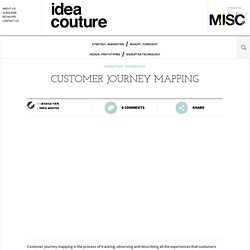
It is a customer-focused technique for the development of innovative service concepts. It visualizes a holistic end-to-end journey where improvements can be made in customer contacts in order to achieve optimal customer experience across all channels. CJM recognizes moments of potential failure or bad customer experiences to help define where products or services need to be strengthened. If you can predict failures, then you can predict successfully. Service Innovation » AT-ONE book.
The AT-ONE book, with the stunningly simple title “How To Design Better Services” is now ready to launch.
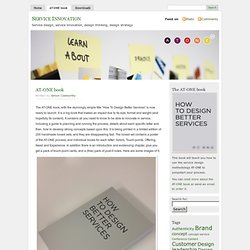
It is a big book that makes an impact due to its size, format and weight (and hopefully its content). It contains all you need to know to be able to innovate in service, including a guide to planning and running the process, details about each specific letter and then, how to develop strong concepts based upon this. It is being printed in a limited edition of 200 handmade boxed sets, and they are disappearing fast. The boxed set contains a poster of the AT-ONE process, and individual books for each letter: Actors, Touch-points, Offering, Need and Experience. In addition there is an introduction and evidencing chapter, plus you get a pack of touch-point cards, and a (free) pack of post-it notes. The book weighs 2.3 kg, and has the following dimensions: 42 cm x 27.5 x 3,5.
Service Design Techniques: Blueprints. Blueprint: in action during a workshop 5 steps that can start a blueprintStep 1: AwareSo many service providers focus on what they actually provide and miss out how their potential customers/clients will find out about it, or leave it to the end when the service is produced (handling it in isolation or delegating it to someonelse).
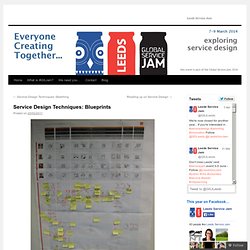
The first step of the blueprint addresses this by asking ‘How do you find out about this service?’ The answer to this question will vary, from service to service, but making time to consider this and knowing where your most valuable/needy customers are is key. The main point is that with cross channel communications, info sharing is part of the main product not a side order or after thought. Step 2: EngageThe next step explores the access points to your product. Embrace – Medical Experience for Ethnic Minority. This was a collaboration project initiated by Pok Oi Hospital under the New Territories West Cluster of Hospital Authority of Hong Kong.
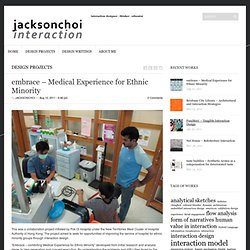
The project aimed to seek for opportunities of improving the service of hospital for ethnic minority groups through interaction design. “Embrace – comforting Medical Experience for Ethnic Minority” developed from initial research and analysis stage, to idea generation and concept execution. By understanding the problems and difficulties faced by the target group, insights were identified and relevant solutions were suggested accordingly. Meld Studios A service design approach is required to deliver great customer experiences - Meld Studios. Internally focussed business tools, processes and systems are often thought about and designed in isolation from the design of the things customers interact with.

Or to put this another way, projects that focus on improving the customer experience often don’t fully consider the tools, processes and systems staff use in the delivery of the experience. Chris Risdon & Todd Wilkens. New Ways of Visualizing the Customer Journey Map. A Step-by-Step Guide to Creating Effective User Journey Maps. In a world where you can reach your customers in so many different ways, how can you ensure consistently high levels of user experience across all of those channels?
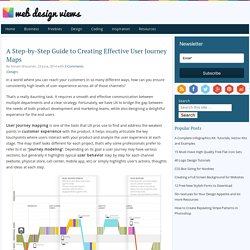
That’s a really daunting task. Pin von Anthony Dever auf „UX / User Journey Maps / Strategy Framewor… Adaptive Paths Guide to Experience Mapping. Facilitating Collaborative Design Workshops – a step by step guide for rapidly creating a shared vision for execution. So how do you do great design in a rapid, multidisciplinary and inclusive way?
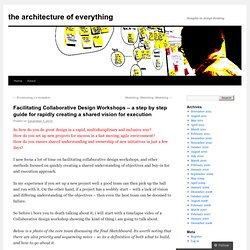
How do you set up new projects for success in a fast moving, agile environment? Method: Let's Get Physical (With Services) This is the seventh piece in the 10x10 series by the innovation firm Method.
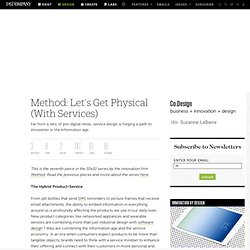
Read the previous pieces and more about the series here. The Hybrid Product-Service From pill bottles that send SMS reminders to picture frames that receive email attachments, the ability to embed information in everything around us is profoundly affecting the products we use in our daily lives. New product categories like networked appliances and wearable sensors are combining more than just industrial design with software design ? Service design concept for Helsinki City Library. The brief for this massive project was somewhat challenging: ”More and more people have grown apart from libraries.
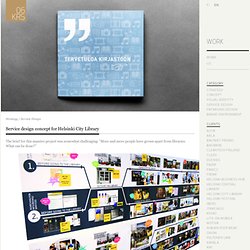
What can be done?” The process took almost two years. The conclusion was that libraries have tried to attract the public with impressive architecture and by being clearly a public space. In reality, people wanted to feel at home. Our solution was a new service and space concept, an urban living room open to all of us. The rethought library offers a cosy environment and an enhanced service interaction in a variety of stimulating spaces. Our service concept design was awarded Fennia Prize 2012, and Hopeahuippu 2009 (silver award, best of the year) in Vuoden Huiput competition. Service design. Reaching excellence with customers requires more than a good strategy.

When it comes to execution, it takes craft, methods and skills to connect customers with the business in concrete ways. Visualizing the customer experience using customer experience journey maps. Too often when we think of a customer, our view is filtered through the lens of our job, profession, department, or specialty. Think of how patients are treated in most hospitals. They are viewed as a disease, an illness, a collection of parts – each with its own specialist. The hospital system is designed for the convenience of the specialists, not for the needs of the patient.